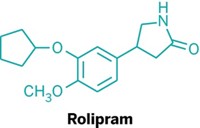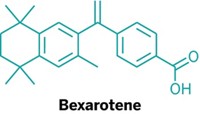Advertisement
Grab your lab coat. Let's get started
Welcome!
Welcome!
Create an account below to get 6 C&EN articles per month, receive newsletters and more - all free.
It seems this is your first time logging in online. Please enter the following information to continue.
As an ACS member you automatically get access to this site. All we need is few more details to create your reading experience.
Not you? Sign in with a different account.
Not you? Sign in with a different account.
ERROR 1
ERROR 1
ERROR 2
ERROR 2
ERROR 2
ERROR 2
ERROR 2
Password and Confirm password must match.
If you have an ACS member number, please enter it here so we can link this account to your membership. (optional)
ERROR 2
ACS values your privacy. By submitting your information, you are gaining access to C&EN and subscribing to our weekly newsletter. We use the information you provide to make your reading experience better, and we will never sell your data to third party members.
Biological Chemistry
Neuron receptor helps spread toxic Parkinson’s fibrils
Transmembrane protein could serve as a new target for Parkinson’s therapies
by Michael Torrice
September 29, 2016
| A version of this story appeared in
Volume 94, Issue 39

A protein that sits in the membranes of neurons binds to and helps spread the toxic protein aggregates that accumulate in the brains of patients with Parkinson’s disease, according to a new study (Science 2016, DOI: 10.1126/science.aah3374). The findings may provide a new target for therapies that slow the progression of the disease, the study’s authors say.
As with other neurodegenerative diseases such as Alzheimer’s, Parkinson’s disease is characterized by the death of neurons accompanied by the formation of clumps or fibrils of certain proteins. In Parkinson’s disease, the protein that aggregates is α-synuclein.
Over the past couple of decades, some researchers have proposed that α-synuclein fibrils spread from cell to cell in the brain. For example, data from autopsies of patients with Parkinson’s suggest that the fibrils move from region to region in the brain as the disease progresses. Also, fibrils applied to cultured neurons encourage the α-synuclein in those cells to misfold, aggregate, and spread to other cells.
To understand this mechanism further, Ted M. Dawson of Johns Hopkins University School of Medicine and colleagues decided to explore how the fibrils get into cells. They hypothesized the first step involved the aggregates binding to a protein receptor on neuron surfaces.
They found the receptor by working with cells that don’t normally bind α-synuclein fibrils and then expressing the genes for each of 400 transmembrane receptors in the cells. When the researchers expressed the gene for a receptor called lymphocyte-activating gene 3 (LAG3), the cells started binding α-synuclein. “We set out on a fishing expedition, and we caught a fish,” Dawson says.
Scientists don’t know what LAG3’s role is in the brain, but in the immune system, the protein helps regulate the activity of certain immune cells, Dawson says.
Through a series of experiments, the team showed that α-synuclein fibrils passed from cell to cell with the help of LAG3. For example, in an experiment involving three collections of neurons cultured in a row in a microfluidic device, α-synuclein fibrils could move from the first cell group to the third only if the cells in the middle group expressed LAG3, suggesting the receptor was necessary for transmission of the aggregates.
Experiments in cultured neurons and in mice also suggested that preventing fibrils from binding to neurons via LAG3 reduced the toxic effects of the fibrils. For example, the researchers reduced those toxic effects by treating neurons with an antibody that binds LAG3 and blocks interactions with the fibrils. And mice that were genetically engineered so that they didn’t express LAG3 showed delayed signs of neuronal damage after being injected with fibrils. These engineered mice also performed better than normal mice in tests of motor skills after fibril injection.
“These findings really fit in with the idea that there is a propagation of fibrils through cells” in Parkinson’s disease, says Kurt Giles, who studies neurodegenerative diseases at the University of California, San Francisco. “The mechanistic work is all pretty solid, and it suggests going to a screen for compounds that inhibit this interaction” between α-synuclein fibrils and LAG3. He thinks that the work Dawson’s team did in this study to identify the specific region of LAG3 that binds fibrils could help researchers design small molecules to do the blocking.
Dawson thinks antibodies that bind LAG3, similar to the ones they used in their experiments, might offer a way to test the value of LAG3 as a therapeutic target. Such antibodies are already in clinical trials as cancer immunotherapies.




Join the conversation
Contact the reporter
Submit a Letter to the Editor for publication
Engage with us on Twitter